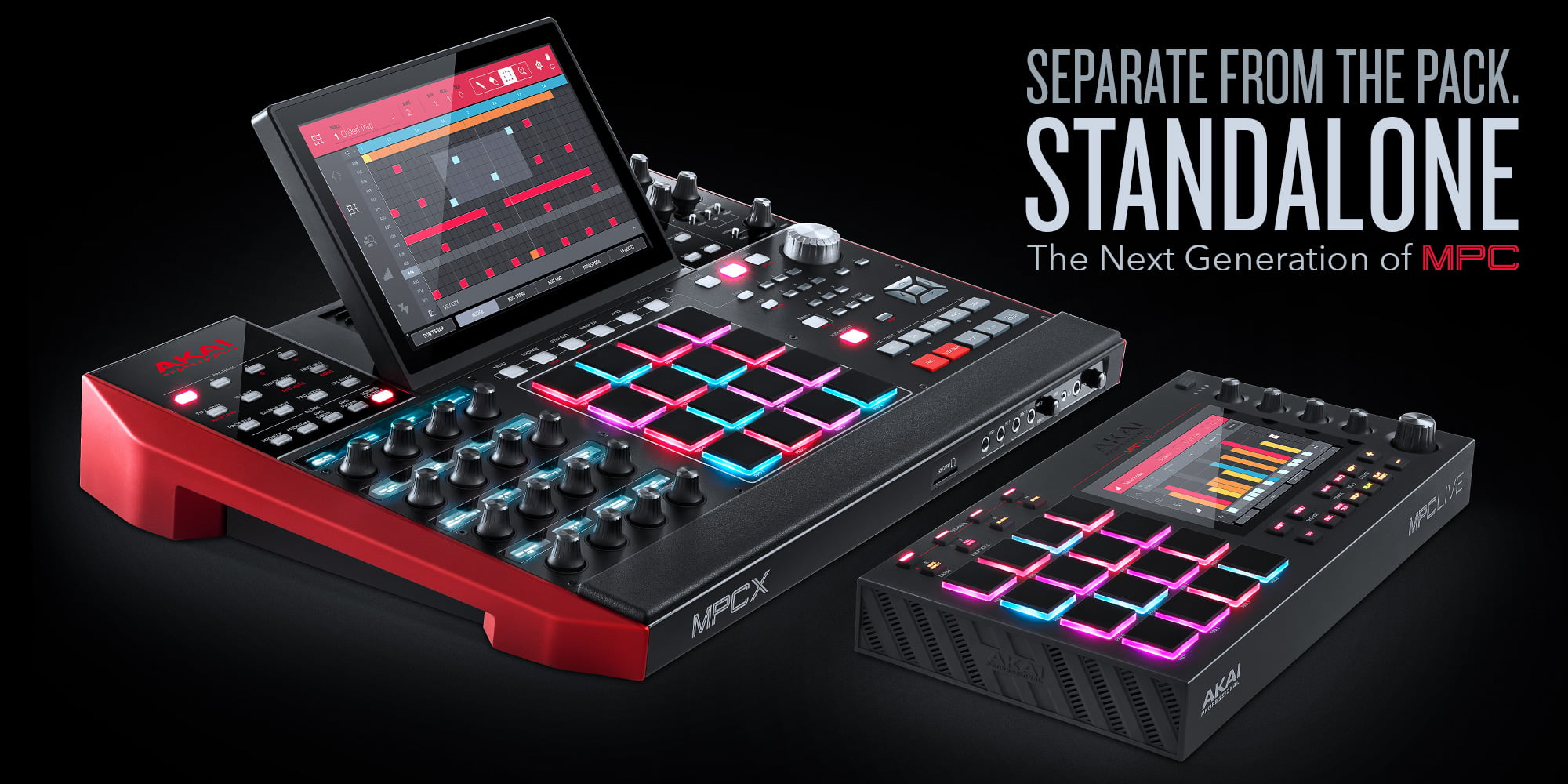

Finished in chrome, it’s perfectly sized and rotates easily under the thumb with a tactile click. After the rattly jog wheels of the MPC 25, I was pleasantly surprised by the new model, that owes more to the MPC 1000 in feel. The four Q-Link controllers and data jog wheel sit either side of the pads. Adjustable screen contrast compensates for this to a degree though. Screen viewing angles are reasonable, although being a fixed rather than tilt able display I found myself standing or placing the Studio on my lap when working to get the best view. The screen is a slightly smaller sized model than the one found in the MPC Renaissance, with the same white on blue display and 360 x 96 resolution. The standard F1-F6 buttons remain beneath the backlit LCD screen for context sensitive selection of mode settings.

The buttons are formed from moulded rubber rather than the usual plastic, which provide a nice tactile click if feeling a little squidgy. The hardware also features a suite of backlit buttons for quick selection of MPC modes such as Program Edit, Sample Edit and Song etc. Dedicated transport control, bar/event location, note repeat and bank selection buttons remain from legacy MPC’s, with the loss of the numeric input pad (which can be replicated using the dedicated ‘numeric’ button and the pads). In use they feel just as good as they do on the Renaissance, a little firmer and more sensitive than those on older MPC’s but reassuringly familiar to touch. Unlike the MPC Renaissance, there is no built-in sound hardware, so audio performance and latency are dependent upon external audio cards or your computer’s in-built audio.ĭominating the device are those sixteen full-sized MPC pads, complete with multi-colour LED’s for velocity and trigger feedback as first seen on the MPC Renaissance.

The MPC Studio is an intelligent MIDI controller that works in conjunction with the included MPC software, installed on a Macintosh or Windows based machine. Inside the box you also get software and driver CD’s, a getting started manual and two mini jack to standard MIDI DIN adaptors for connection to external MIDI gear. Look round the back and you’ll find a power switch (the MPC Studio however is bus powered only), Kensington security slot, two mini jack sockets for MIDI in/out and the obligatory USB type ‘B’ socket. Build quality is excellent and more than tough enough to withstand life on the road, although Akai thoughtfully do also include a smart neoprene case for extra protection. With a lightweight 0.89kg chassis and compact 284mm x 257mm x 22.6mm footprint, it’s perfectly suited for small studio spaces or on the move beat creation. Wow! Encased in brushed aluminium, the MPC Studio oozes quality from every angle.


 0 kommentar(er)
0 kommentar(er)
